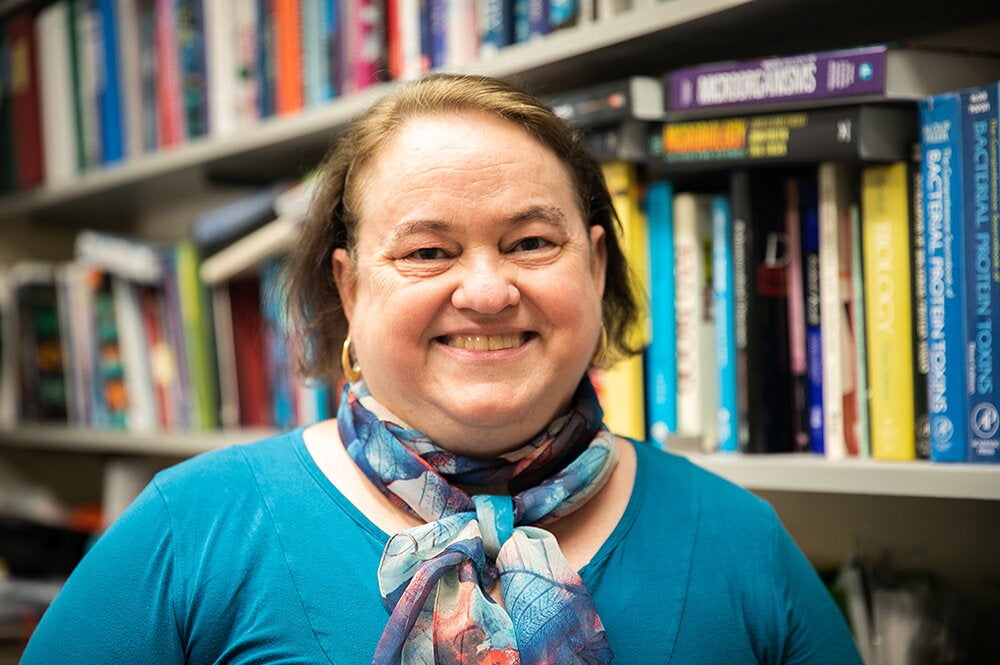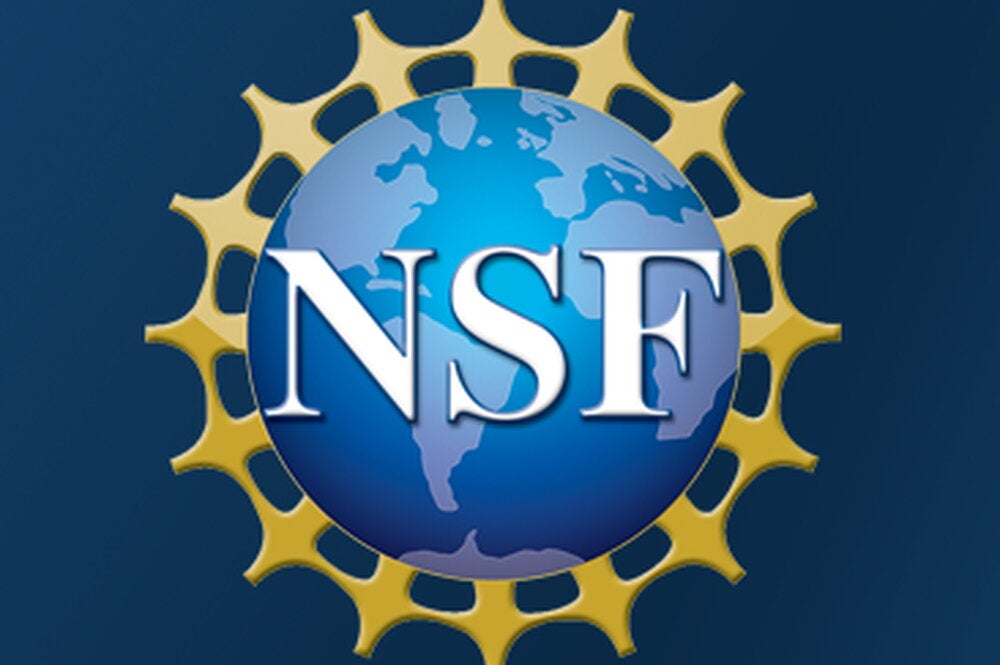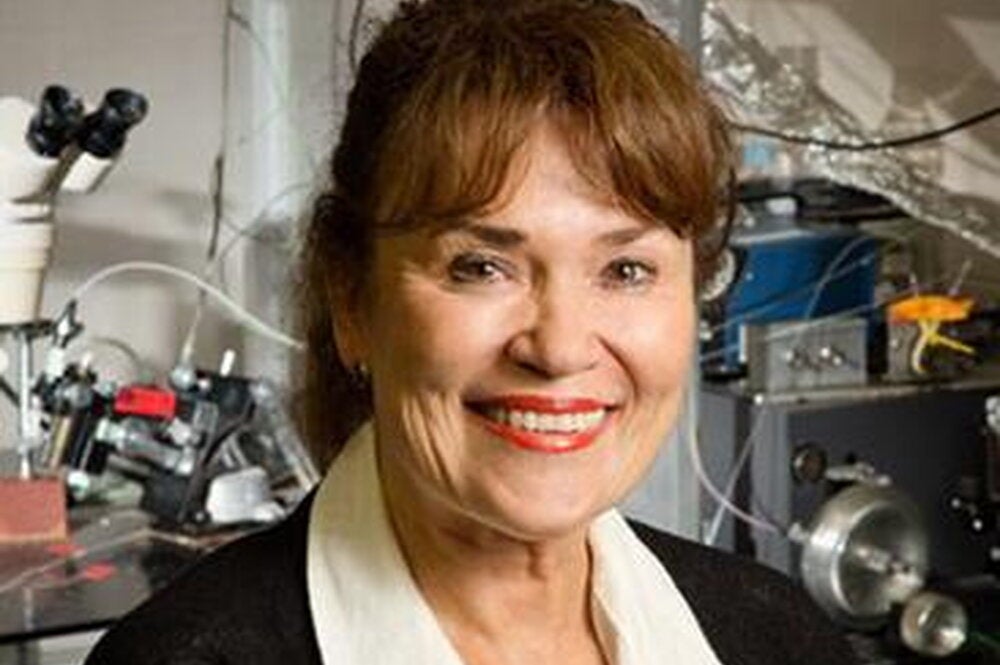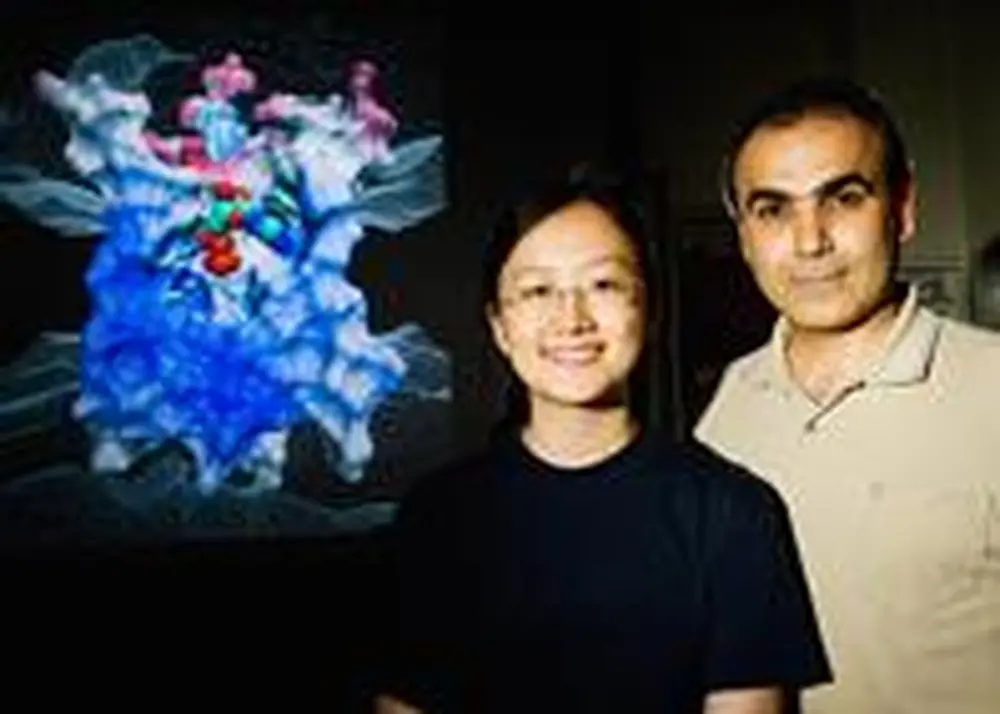
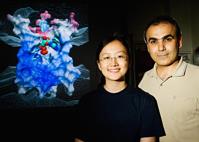
Without ATP, life as we know it would end.
Any time something in your body, such as a hormone, moves from one place to another, you use ATP, or adenosine triphosphate. Now, for the first time, LAS researchers have simulated a key step in the cellular recycling of ATP, shedding new light on one of the most vital biochemical functions in the human body.
In fact, this is the first time that researchers anywhere have simulated the binding of a molecule to a protein, based purely on the natural motion of the molecule without forcing the process in the simulations.
The body continually converts adenosine diphosphate (ADP) to ATP, says Emad Tajkhorshid, a University of Illinois biochemistry professor who led the study conducted by Yi Wang, a biophysics graduate student. They simulated the binding of the ADP molecule to a carrier protein, which then transfers the ADP into the mitochondrion, the cell's powerhouse. Once inside the mitochondrion, ADP is converted to ATP.
This animation shows the results of a 0.1 microsecond simulation of the spontaneous binding of ADP to the mitochondrial ATP/ADP carrier in full atomic detail. This is the first simulation in which ligand binding to a macromolecule has been described with unbiased molecular dynamics simulation. The animation lasts about 100 seconds, 1 trillion times longer than the simulation it depicts. Contact Emad Tajkhorshid for permission to use the animation in any form. (Video by Yi Wang and Emad Tajkhorshid, 2008)
After ATP is created, it is booted out of the mitochondrion, while additional ADP molecules move in. As Tajkhorshid says, it's "a lot like a revolving door."
The ATP molecule packs a powerful punch, he adds, and is the primary energy source that drives most of the chemical reactions within cells. The energy produced by ATP also creates more ADP, which is then converted into more ATP—a continuous recycling process.
The animation simulations created by the researchers tracked the binding process for a significantly longer time than was previously possible. Every single simulation used to create the animation was done with 128 processors continuously working for more than a month. Such computationally demanding projects were made possible only recently, Tajkhorshid says, due to significant advances at national supercomputing centers.
"That's why we're seeing more biologically relevant events in our simulations," he points out.
Tajkhorshid says this simulation was able to show how the ADP orients itself as it travels to the site where it binds to the carrier protein. They also observed for the first time that ADP disrupts several bonds, known as "salt bridges," when it binds to the carrier protein. Breaking the salt bridges allows the carrier protein to open—in effect unlocking the door that normally blocks ADP's route into a cell's mitochondrion.
In addition, they found that the binding site on the carrier protein had an extremely positive electrical charge, which strongly attracts the negatively charged ADP molecules. The positive charge also makes it possible for the protein carrier to nestle tightly in the mitochondrial membrane, setting the stage for the conversion of ADP to ATP.
"The study suggests that all members of the mitochondrial carrier family might take advantage of such a strong positive reaction in their mechanism," Tajkhorshid says.
To get some sense of how much ATP is generated in the body, he says, "It has been estimated that you burn more than your body weight in ATP every day. So that's how much ATP you have to carry across the inner mitochondrial membrane every day—through this guy."
